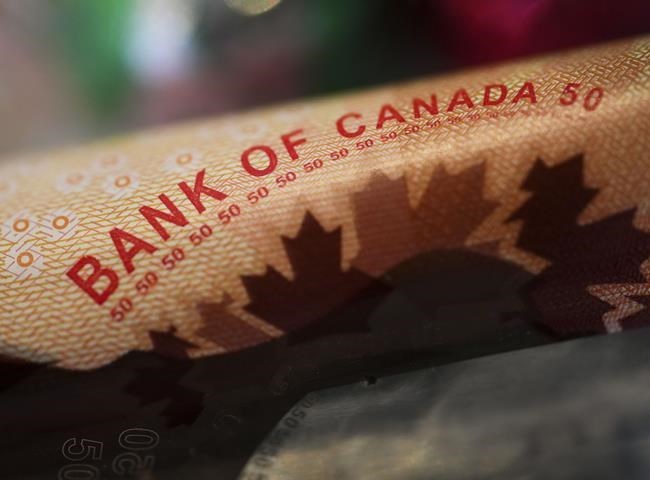OTTAWA — The Bank of Canada considered raising interest rates earlier this month, as it feared being too slow to react to sticky inflation.
In its summary of deliberations released Wednesday, the central bank says its governing council contemplated another rate hike. The main arguments in favour of another rate hike were resilience in economic growth, potential challenges bringing inflation down from three to two per cent and the risk of waiting too long to respond to stubborn inflation.
While the central bank appears confident that inflation will fall to three per cent by mid-year, it remains concerned that the return to two per cent inflation may take longer as the cost of services remains elevated.
Ultimately, the Bank of Canada maintained its key interest rate at 4.5 per cent on April 12 and decided in favour of waiting for more economic data to determine whether rates need to rise further.
"Governing council agreed at this decision to maintain the target for the overnight rate at 4.5 per cent and continue to assess whether monetary policy is sufficiently restrictive to return inflation to the two per cent target," the Bank of Canada said.
The Bank of Canada announced earlier this year its intentions to pause its aggressive rate-hiking cycle, noting it doesn't anticipate raising rates again, unless inflation and the economy run hotter than forecast.
Its decision to hold its key interest rate was supported by its outlook for growth and inflation remaining largely unchanged and signs that demand, inflation and the labour market are going to ease in the coming quarters.
At the time of its interest rate decision, inflation had fallen to 5.2 per cent in February. The latest data shows inflation has cooled further to 4.3 per cent in March.
While the potential challenges ahead didn't sway the Bank of Canada to raise interest rates, it kept the door open to more rate hikes and warn at its last decision that Canadians shouldn't anticipate rate cuts this year.
"The implied expectation in the market that we are going to be cutting our policy rate later in the year, that doesn’t look today like the most likely scenario to us,” Macklem said on April 12 at a news conference.
The decision to hold its key interest rate comes as the economy has been running hotter than expected. That's despite the Bank of Canada's key interest rate sitting at the highest level since 2007, making borrowing more expensive for Canadians and businesses.
After posting zero growth in the fourth quarter, the Canadian economy appears to be bouncing back in the first quarter. Real gross domestic product grew by 0.5 per cent in January and Statistics Canada's preliminary estimate in February suggests 0.3 per cent growth that month.
The labour market is also robust, with firms continuing to hire. Canada's unemployment rate remained at five per cent in March, hovering around record lows.
Although the jobs added in recent months appear puzzling, economists have noted that strong population growth explains some of the strength in the labour market.
The Bank of Canada also made that point in its summary of deliberations.
"In this context, the strong hiring numbers in the labour force survey in recent months were perhaps not surprising. With faster population growth, employment growth could be stronger than the historical trend without adding to labour market tightness," the Bank of Canada said.
This report by The Canadian Press was first published April 26, 2023.
Nojoud Al Mallees, The Canadian Press




